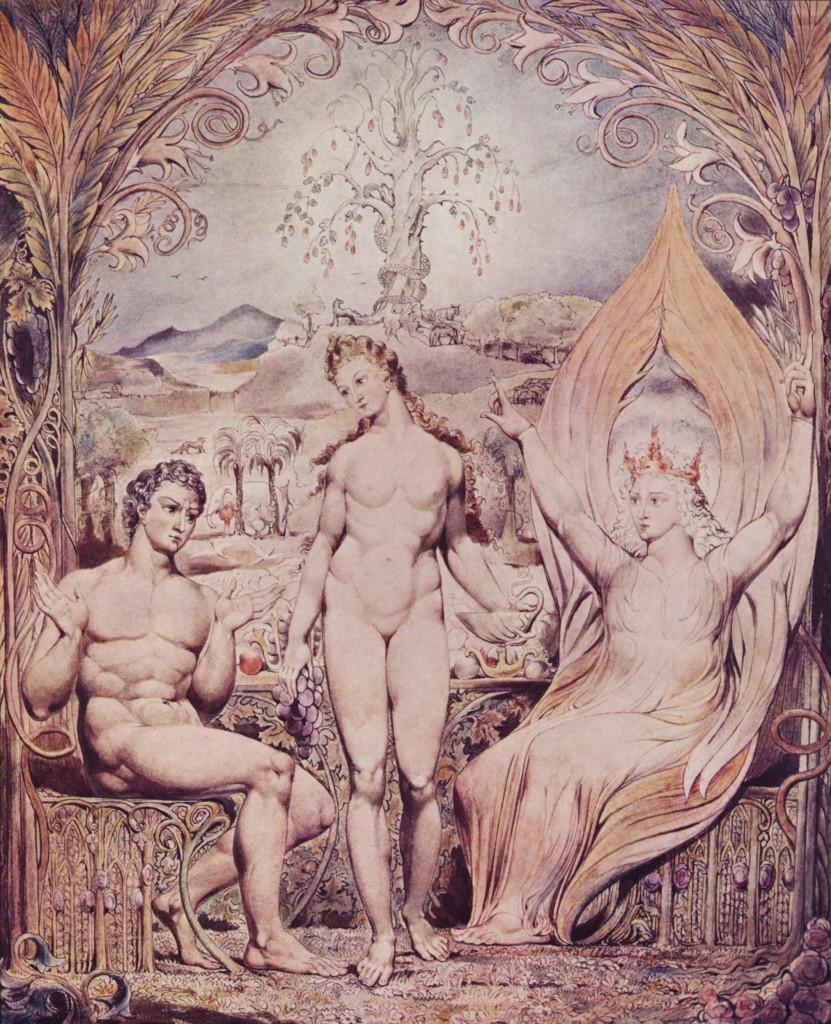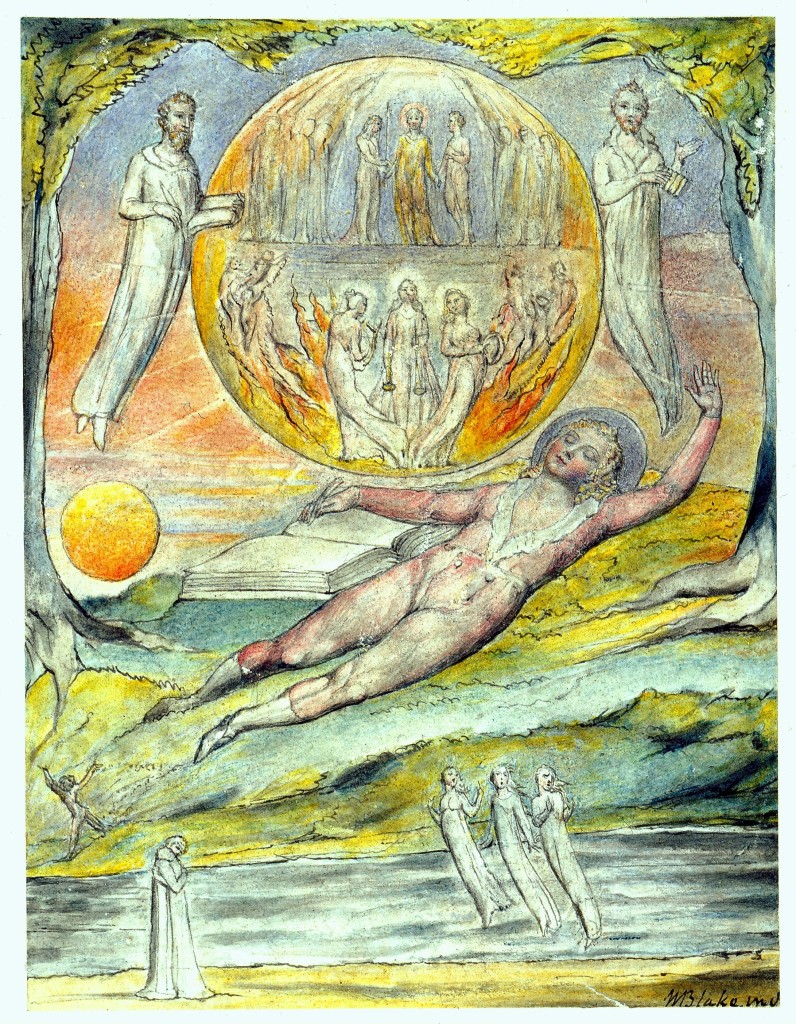When we look at a dream, it can become our own, and our own interpretation of it can become a legitimate one…
Like so many artists of extreme individuality, William Blake must be accepted without question or completely rejected. His paintings and engravings are ecstatic and thrilling visions, or they are conscientious but obvious and labored illustrations based on forms put down by Raphael and Michelangelo. In everything Blake did, his naivete is a primary characteristic.
In The Archangel Raphael with Adam and Eve there is not the slightest question that Adam and Eve are two specific human beings of exceptional beauty, at least within Blake’s frame of reference of Renaissance idealization. Here, twining plants and exotic trees of Blake’s own invention are as real as his own small garden where he was fond of impersonating, or of confusing himself and his wife with, Adam and Eve.

—The angel in charge of the dreams of the righteous is Gabriel. These dreams, while they are not as great as prophecy, are close to prophecy. Maimonides developed a conception of dreams, based on his psychology and epistemology, as an integral part of philosophical anthropology, which totally rejects all supernatural categories. The religious significance of Maimonides’ conception lies in his identification of dreams and prophecy in terms of their essence, and their distinction in terms of their content . Maimonides attributes no cognitive significance to dreams in the sense of a spiritual process which introduces new ideas or knowledge which was not previously known. Dreams are a function of the imagination only, not of the senses or the intellect—click image for source…
To Blake, the word “real” described what was most real to him, whether it was of this world or another world. He appears to have made little distinction between the world around him- at least,that part of it which he was willing to accept- and the world of the Bible,Milton, Dante and Shakespeare. The world he synthesized in his art drew from all these sources arriving at a sort of alternate image of what reality could actually be imagined to be without being anchored in what to Blake was probably a nightmare scenario of conventionality, or explainable allegory.

—Rambam is saying that the story of the sin in Eden is part of creation
—part of an account of the fundamental nature of reality, not a
historical account of an individual. History begins with Zeh sefer toldot ha
-Adam .The ―utterances of the Sages are, in relationship to the theoretical aspect of the Written Torah, what the Talmud is to the practical aspect of the Written Torah—click image for source…
“Fable or allegory is a totally distinct and inferior kind of poetry,” he wrote. “Vision or imagination is a representation of what actually exists real and interchangeably.” That for Blake there existed no boundary or at best a blurry zone between seemingly tangible material fact and visionary allusions to a new uncharted world, almost a messianic realm, can put Blake by definition frightingly close to the clinical definition of insanity.
Blake might have indeed finished his days as an incarcerated lunatic if his wife had not combined unquestioning faith in his appointed role as a spiritual messenger through a saintly and divine holding of body and soul together that kept the artist at least somewhat anchored on terra firma and maybe guaranteeing her a little comfy spot in Eden herself.
ADDENDUM:
(see link at end)…According to Maimonides the purpose of the ladder is to explain the relationship between two realities, between existence on earth and existence in the “world of heavenly spheres,” both of which are set in motion by God. Jacob sees “angels of God” on the ladder. Those “going up and down on it” are the prophets who, from studying the ladder–the connection between the two worlds, i.e., God’s providence–are elevated to a higher, heavenly level of understanding. That is why it says “going up and down”; first they ascend and become inspired, then they descend and transmit the understanding they acquired to the world. In addition, “God stands on it,” e.g., on the “ladder”; this means God is there constantly, as the Prime Mover, the Cause that governs and is providence over all. According to Maimonides, the dream is a representation of the two worlds, and Jacob, as the person who contemplates the ladder, e.g., the connection between the worlds, attains an understanding of God and of His ways in our world. In the words of Maimonides Read More:http://www.biu.ac.il/JH/Parasha/eng/vayetze/harlap.html







 COMMENTS
COMMENTS